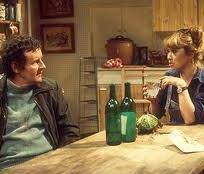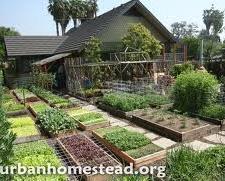
The main character quits his job on his 40th birthday. Frustrated by office life, he decides to live a completely self-sufficient existence with his wife. They transform their suburban garden into an allotment. They make their own electricity and wine and house chickens, pigs, and even a goat in their suburban garden.

The movement has since gone through an almost thirty year cycle, with a resurgence in recent years.
On facebook, people share photos under the heading, Grow Food Not Lawns. I love seeing the inventive ways people grow produce, sometimes inside greenhouses with walls built from plastic bottles, on windowsills, or outside in old bathtubs.
Earlier precedents had been set before The Good Life became so popular. The Dig for Victory campaign during World War II encouraged the whole country to grow their own food and peaked at nearly one and a half million allotments. This was because of the terrible wartime shortages and naval blockades.
Nowadays, most suburbs still run allotments where people can grow their vegetables. Part of a field is fenced off down the road from me, set out with rows ready for spring planting. It's a great community activity and worthwhile although there is usually a waiting list for space.
Growing your own vegetables could be the best way to make ends meet in these times of spiraling food costs.

 RSS Feed
RSS Feed






